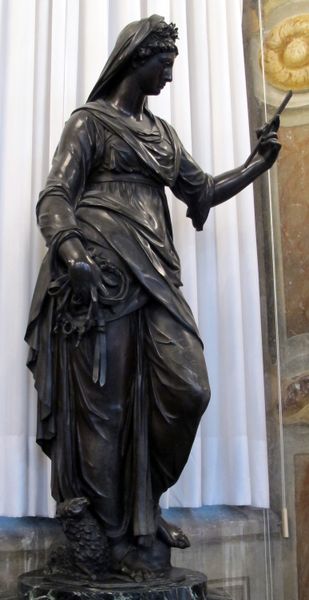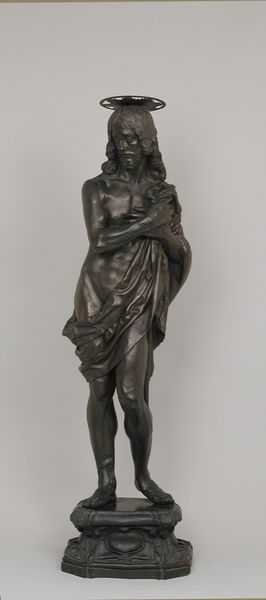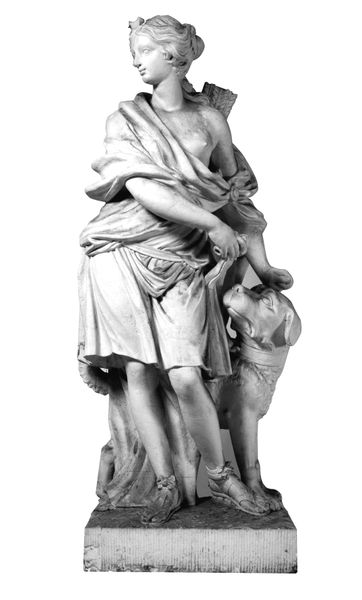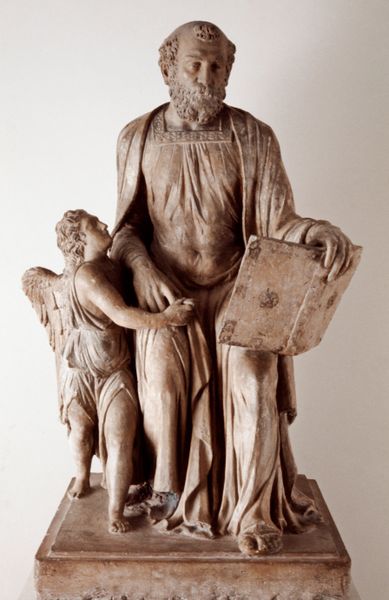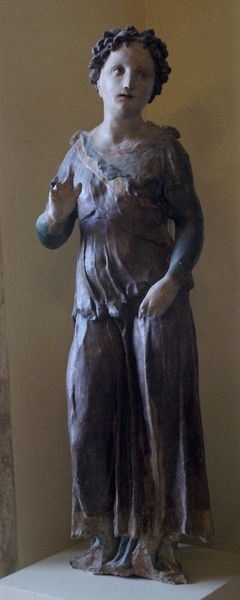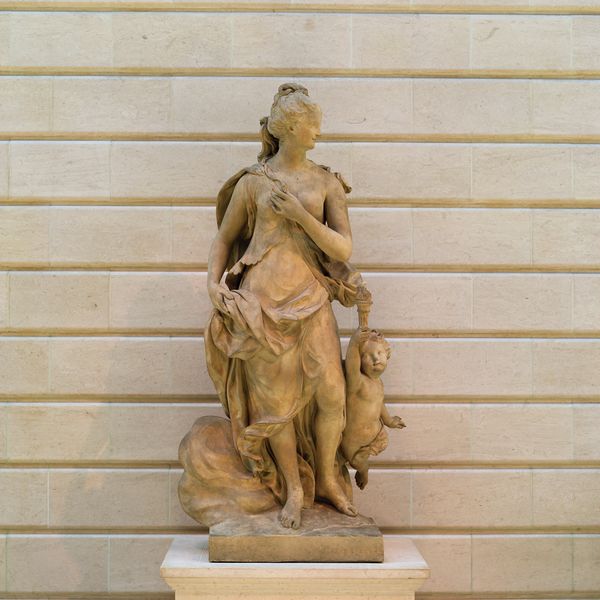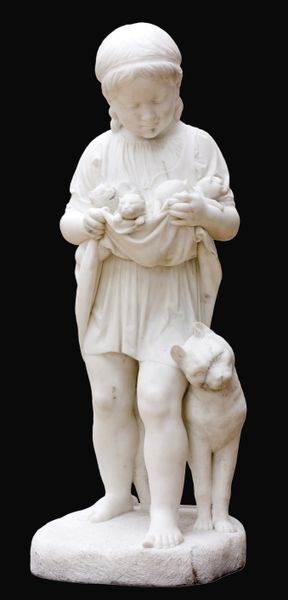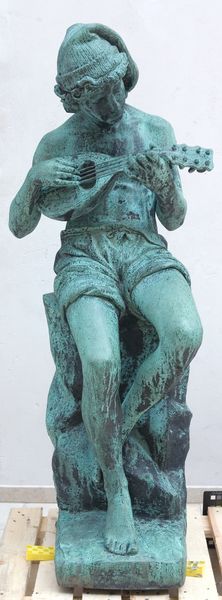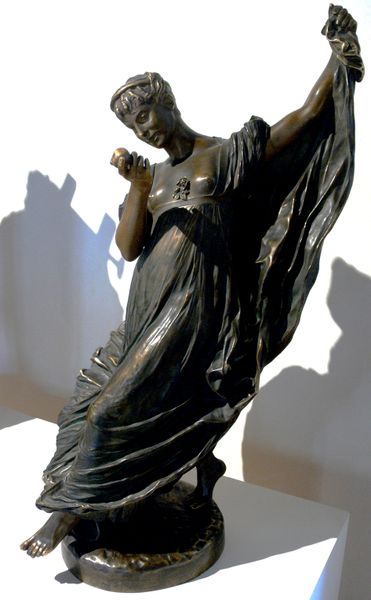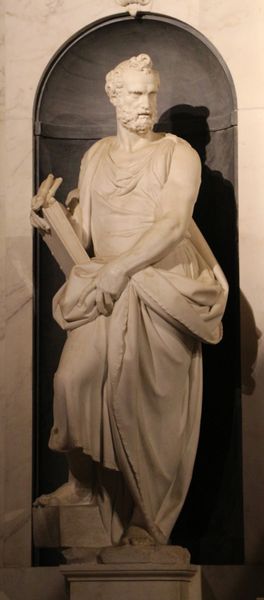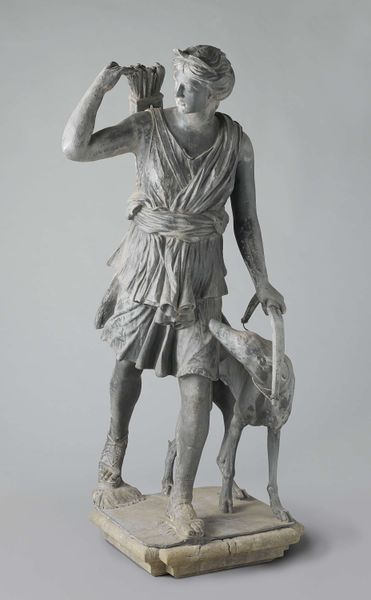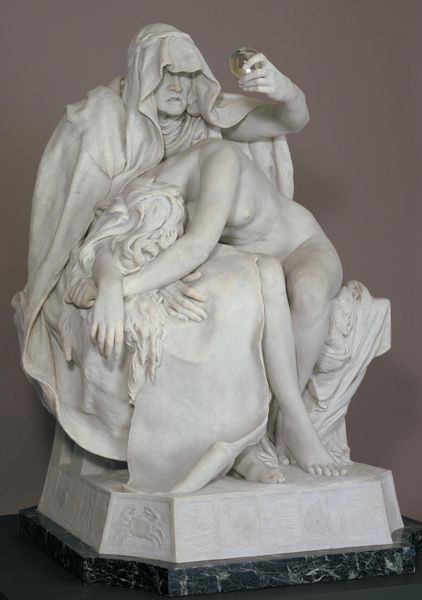
bronze, sculpture
#
portrait
#
sculpture
#
bronze
#
figuration
#
male figure
#
sculpture
#
charcoal
#
statue
Dimensions: 61 cm (height) x 30 cm (width) x 30 cm (depth) (Netto)
O. Evens created this bronze sculpture, 'The Prodigal Son' sometime in the mid-to-late 19th century. It depicts a biblical parable about repentance and forgiveness, themes which resonated deeply in the social and religious context of 19th-century Denmark. The sculpture's meaning emerges from a nexus of visual and cultural references. The downcast gaze and tattered clothing of the figure, and the pig by his side, symbolize the son’s fall from grace and descent into poverty. While evoking the Christian narrative, the work also speaks to the social realities of the time, such as the plight of the rural poor and the moral expectations placed on individuals within a hierarchical society. Art historians look at how the Royal Danish Academy of Fine Arts, which trained artists like Evens, shaped the production and reception of such works. By studying archival documents, exhibition catalogues, and contemporary reviews, we can better understand the complex interplay between religious belief, social commentary, and artistic expression in 19th-century Danish sculpture.
Comments
No comments
Be the first to comment and join the conversation on the ultimate creative platform.
